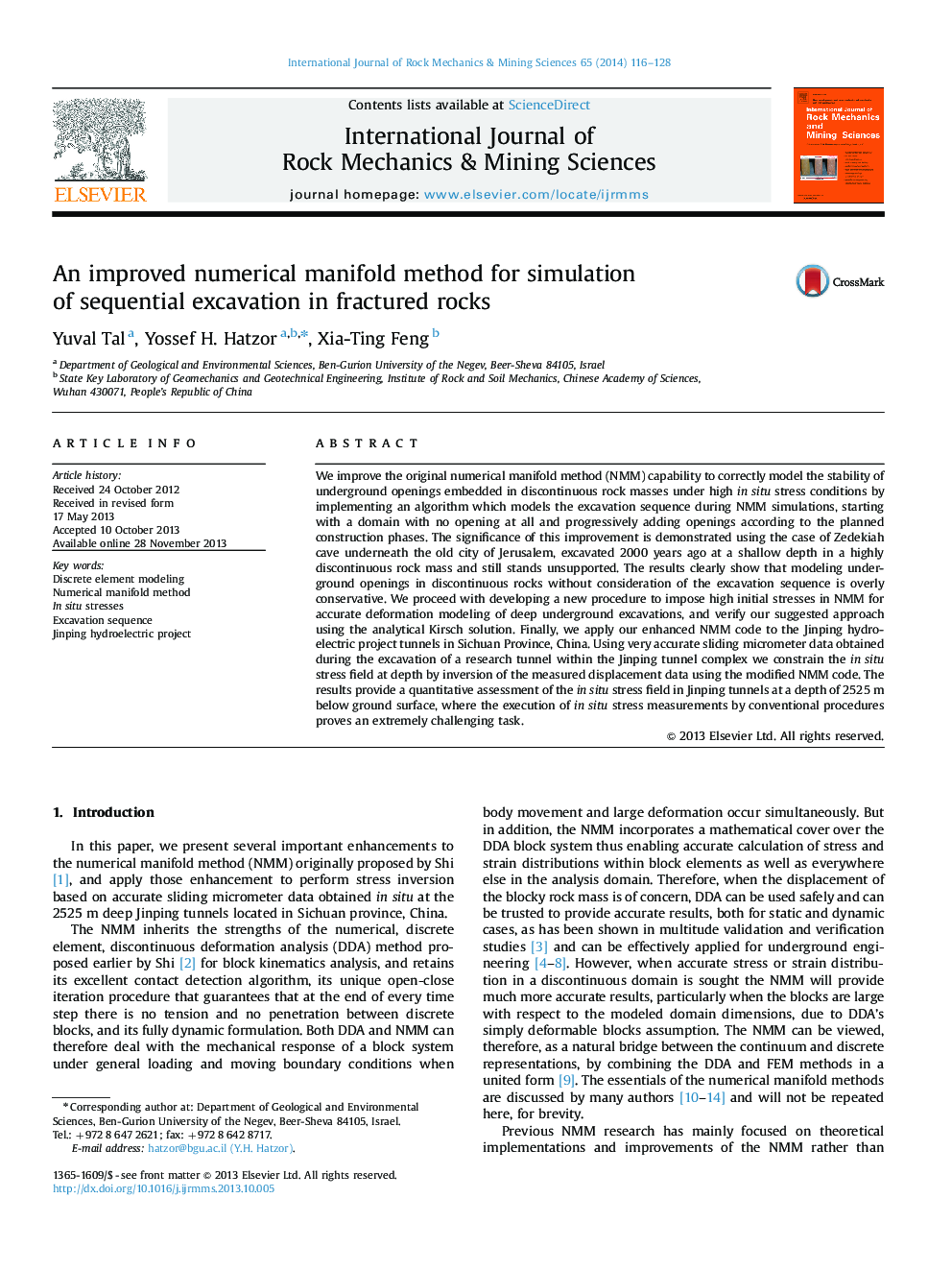| Article ID | Journal | Published Year | Pages | File Type |
|---|---|---|---|---|
| 809259 | International Journal of Rock Mechanics and Mining Sciences | 2014 | 13 Pages |
•Introduction of sequence excavation to NMM.•Introduction of initial stresses using tractions on boundaries in NMM.•Modeling underground opening stability without consideration of sequential excavation may lead to overly conservative results.•Enhanced NMM is applied to resolve the in situ stress field at the 2500 m deep tunnels in Jinping hydroelectric project.
We improve the original numerical manifold method (NMM) capability to correctly model the stability of underground openings embedded in discontinuous rock masses under high in situ stress conditions by implementing an algorithm which models the excavation sequence during NMM simulations, starting with a domain with no opening at all and progressively adding openings according to the planned construction phases. The significance of this improvement is demonstrated using the case of Zedekiah cave underneath the old city of Jerusalem, excavated 2000 years ago at a shallow depth in a highly discontinuous rock mass and still stands unsupported. The results clearly show that modeling underground openings in discontinuous rocks without consideration of the excavation sequence is overly conservative. We proceed with developing a new procedure to impose high initial stresses in NMM for accurate deformation modeling of deep underground excavations, and verify our suggested approach using the analytical Kirsch solution. Finally, we apply our enhanced NMM code to the Jinping hydroelectric project tunnels in Sichuan Province, China. Using very accurate sliding micrometer data obtained during the excavation of a research tunnel within the Jinping tunnel complex we constrain the in situ stress field at depth by inversion of the measured displacement data using the modified NMM code. The results provide a quantitative assessment of the in situ stress field in Jinping tunnels at a depth of 2525 m below ground surface, where the execution of in situ stress measurements by conventional procedures proves an extremely challenging task.
